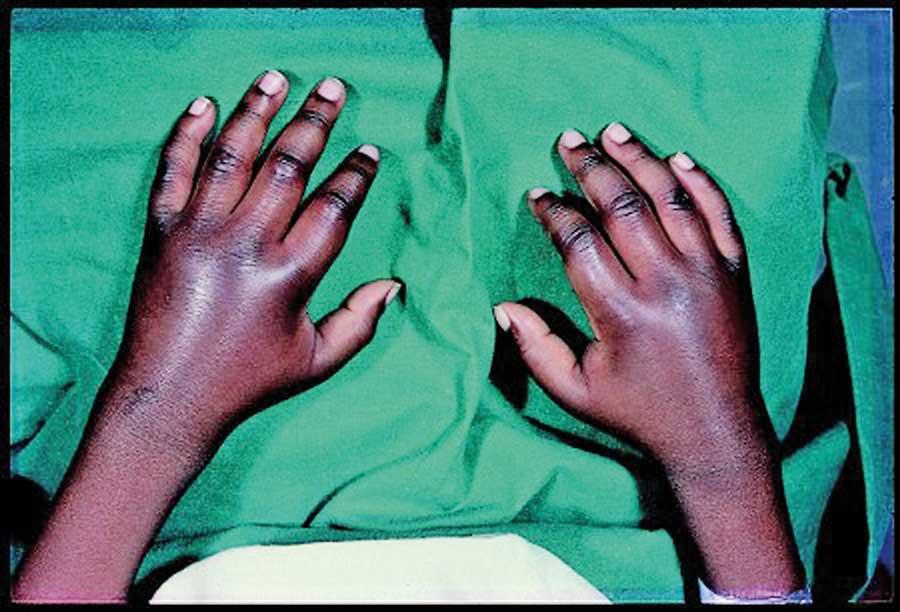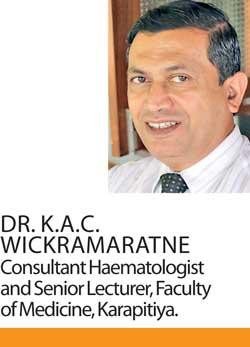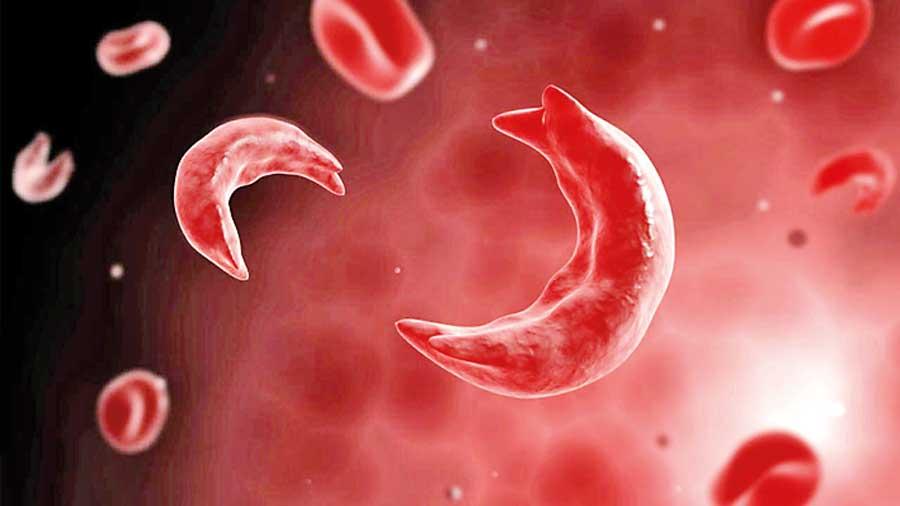Reply To:
Name - Reply Comment

June 19 is World Sickle Cell Day
 Sickle cell disease is an inherited ailment of the blood, which can cause many complications. While sickle cell disease is rare in Sri Lanka, there is a significant number of diagnosed and undiagnosed patients living with sickle cell disease in various parts of the country. This week, marking the world sickle cell day, health capsule will be focusing on Sickle cell disease. Joining with us in the discussion is Dr. K.A.C.Wickramaratne, Consultant Haematologist and Senior Lecturer, Faculty of Medicine, Karapitiya.
Sickle cell disease is an inherited ailment of the blood, which can cause many complications. While sickle cell disease is rare in Sri Lanka, there is a significant number of diagnosed and undiagnosed patients living with sickle cell disease in various parts of the country. This week, marking the world sickle cell day, health capsule will be focusing on Sickle cell disease. Joining with us in the discussion is Dr. K.A.C.Wickramaratne, Consultant Haematologist and Senior Lecturer, Faculty of Medicine, Karapitiya.
Case scenario:
A very ill eight-year-old child is admitted to a hospital. The paediatrician notices that he is in pain. He is febrile. He complains of aches and pains in the legs and the body.
He has had aches and pains intermittently. Also he is easily exhausted and complains of pain while playing; a complaint which was not taken seriously by the parents.
“Are mother and the father blood relations”, the paediatrician inquired. “No we are from different villages.
He is our first son,” replied the father.
Can it be a blood cancer? Parents were worried.
The pediatrician ordered more blood tests including a blood picture.
The haematologist discussed with the paediatrician, looking for the possibility of sickle cell disease in the child. However, both parents had had no significant health issues.
The laboratory performs another test called ‘sickling test’.
The next day the haematologist communicated directly with the paediatrician and his sickling test was positive. They needed to test blood for abnormal haemoglobinand quantification.
After a few days the haemoglibin report arrived and the child was having sickle thaltrait.
About Sickle Cell disease
What is sickle cell anaemia? We call it 0a haemoglobinopathy, or a disease where there is the formation of abnormal haemoglobins; the oxygen carrying red pigment in blood within red cells. So the quality and therefore the function of these haemoglobins is abnormal.These haemoglobins are sticky, forming rigid structures inside red cells. This makes red cells change its shape into typical sickle cells.
Normal red cells are flexible and flat and round in shape with a thin centre. They resemble ‘ulundu wadai, or doughnuts.
In sickle cell anaemia, the shape of the red cell changes to a crescent or typical ‘sickle’ shape (sickle is the farming equipment used in paddy fields). These abnormal cells have a shorter life span compared to normal red cells. These cells are removed from the blood within few days; 10 to 20 days compared to 120 days of normal red cell life cycle. Therefore, it is a form of haemolytic anaemia. Anaemia causes lethargy. The oxygen supply to whole body is affected in the case of anaemia.
More than anaemia, sickle cell disease can damage all the tissues and organs in the body leading to ‘sickle cell disease’.
In Sri Lanka it is a comparatively rare disease. A recent hospital based survey concluded that less than hundred patients have been diagnosed with SCD or similar conditions at present in Sri Lanka. But in the mediterranian region and in African countries it is far common.
Seriousness of the disease
When it is sickle cell disease, (that is when both genes received from mother and father are abnormal), it affects the whole body. There is an effect on each and every organ. The growth of a child is impaired. With time their spleen undergoes total fibrosis and becomes non functional. Therefore, these patients need early vaccination to protect against some diseases.
The main problem in sickle cell disease is that these sickle cells are very rigid. Therefore these abnormal cells can block small blood vessels. That can happen in each and every tissue, from head to toe, from brain to bones. The disease continues damaging each and every organ slowly unless managed appropriately.
Disease presentation
Sickle cell disease presents during early childhood. The condition is present mainly due to sickle cell blockage or stacking and packing of sickle cells in tissues and organs. Aches and pains are very common with such patients. The condition is usually aggravated when the kids are exposed to infections or stress situations. Severe forms of the condition can cause respiratory distress or distress in many organs. They can have mild anaemia. Episodes of aches and pains, painful swellings in joints and fingers, vision problems, stroke, cognitive impairement, organ damage, bone necrosis, infarctions in organs and frequent infections etc can occur in these patients.

Origin of the disease
The condition is inherited from parents. To have full disease, both genes which come from mother and father should be abnormal. If one gene is normal and the other gene is abnormal we call it sickle cell trait or carrier. It gives rise to a milder disease. It can go unnoticed. But they can transfer that gene to their children. If a couple with similar traits is married, they run the risk of having children with sickle cell disease. Why, because they can randomly transfer abnormal gene in each to their kids. 50% of all our genes are received from our mother and the rest is received from the father.
In addition, if one parent has a sickle trait or is a carrier (carrying only one abnormal gene) and the other parent is a thalassaemia trait or carrier (carrying one abnormal thalassaemia gene) they can transfer both these genes into their children. They can have all the features of sickle cell disease (SCD) depending on type of thalassaemia they carry.
If clinical features suspect SCD, a full blood count, blood picture test and some biochemical tests can give a clue to the disease. Using a blood picture we can see sickle cells. The full blood count will confirm anaemia and probable causes for fever etc if any. A simple test called ‘sickling test’ can demonstrate the formation of sickle cells under laboratory conditions. Haemoglobin capillary electrophoresis or high performance liquid chromatography is diagnostic. In SCD, the patient has mainly sickle haemoglobin and a small quantity of normal sub type only. Generally it is recommended to perform family screening when one member is found to be positive for sickle cell disease, trait or any form of thalassaemias.
Treatment
Treatment can solve most of the problems and can improve the quality of life. Blood transfusions, drugs to alleviate pain, prompt treatment of any infection, the avoidance of dehydration and severe stressors are some drugs, which can induce the formation of good forms of haemoglobin, can be used in the treatment. Bone marrow transplant can offer cure.
Message to public
In case of known sickle cell disease or trait, marriage among couples with haemoglobin defects should be avoided. In married couples, screening before getting pregnant and during pregnancy is available in suspected cases. Couples with abnormal genes can look for in vitro fertilization facilities with genetic testing. Though extremely costly, this can ensure a healthy fetus without inherited diseases such as Sickle cell disease.